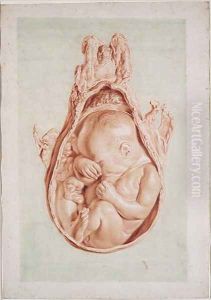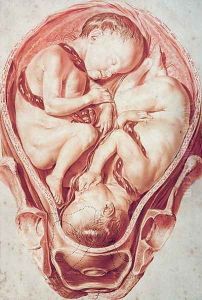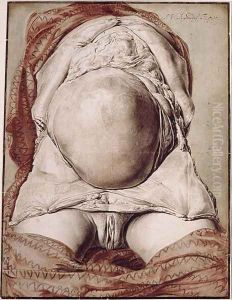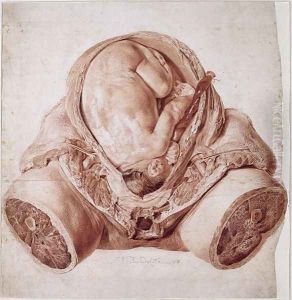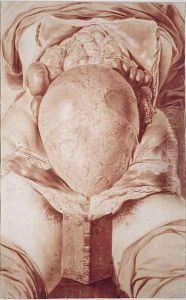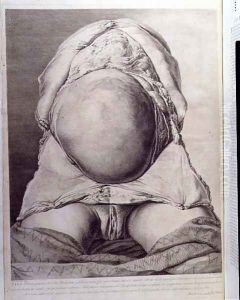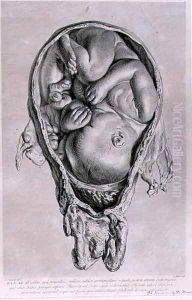Jan van Rymsdyk Paintings
Jan van Rymsdyk was a Dutch artist known for his detailed anatomical drawings, particularly of human dissections, which were significant in the field of obstetrics. While his exact date of birth is not clearly documented, it is widely accepted that he was active during the mid-18th century, and his work suggests that he was probably born around 1750. His death is similarly uncertain, but he is believed to have died around 1790.
Van Rymsdyk is best known for his contributions to the medical illustrations found in William Hunter's seminal work, 'The Anatomy of the Human Gravid Uterus Exhibited in Figures', published in 1774. This work contained groundbreaking illustrations of the pregnant human uterus and was vital to the advancement of obstetrics and gynecology as scientific disciplines. Van Rymsdyk's meticulous drawings were celebrated for their accuracy and detail, and they played a crucial role in educating physicians and midwives during a time when knowledge of human anatomy was still developing.
In addition to his work with Hunter, van Rymsdyk also provided illustrations for other medical publications of the time. His drawings were characterized by their technical skill and their ability to convey complex anatomical structures clearly and precisely. This was particularly important for medical students and professionals who relied on such illustrations for education and practice, as the opportunity for direct anatomical dissection was limited in the 18th century.
Despite the significance of his work, relatively little is known about van Rymsdyk's personal life or training. He is often overshadowed by the medical professionals he worked with, and as such, his biography is more closely tied to the history of medical illustration than to the broader art historical narrative. Nevertheless, his contributions to the field of medical science and illustration are still recognized by historians and medical professionals today.

